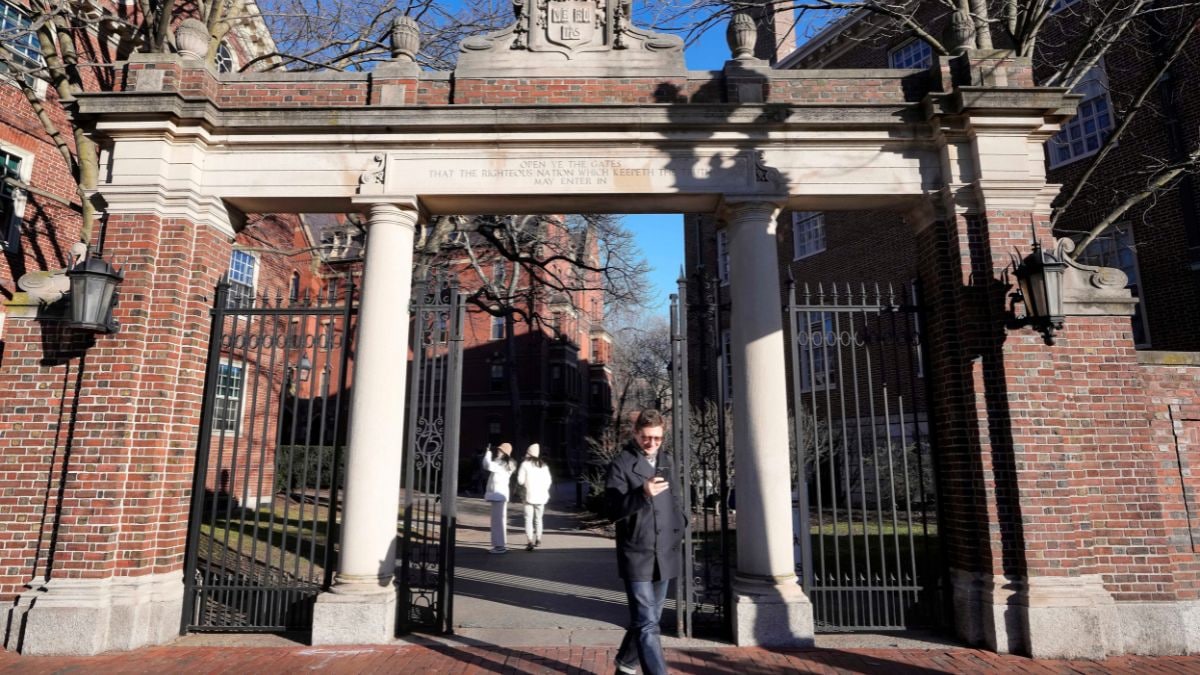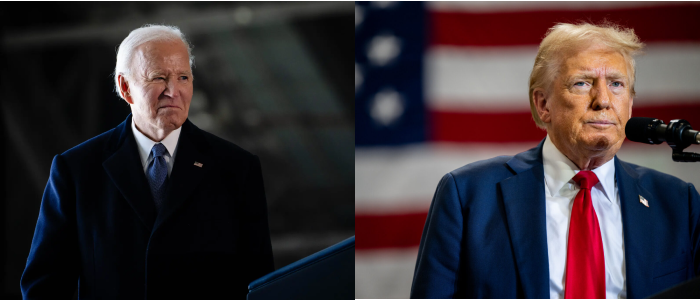The ongoing clash between the Trump administration and Harvard University epitomises a broader struggle over power, ideology, and the role of federal funding in shaping institutional policies and outcomes. But much more is at stake here than the simplistic manner in which the issue has been framed by the largely anti-Trump mainstream media. The allegation is that the US government is trying to arm-twist, even throttle, American universities.
Their independence and freedom from government interference, especially in private universities, was taken for granted. In state-funded schools too, such as the one I got my Masters and PhD from, the University of Illinois at Urbana-Champain, I never heard of the governor of the state or for that matter any senior official or politician dictating to the university what to do. Quite unlike, one might add, to the routinised political interference in Indian universities, barring the IITs and IIMs.

But before proceeding, let us understand the crux of the conflict. Last Monday, the US government announced that it would suspend $2.2 billions of multiyear grants from Harvard in retaliation of the university’s “troubling entitlement mindset.
” The cut was the Trump’s response to Harvard’s stand that it would not accede to demands on curbing viewpoints and admitting international students perceived by the administration to be “hostile to the American values and institutions.” Harvard’s X account posted: “The university will not surrender its independence or relinquish its constitutional rights.” It added, “Neither Harvard nor any other private university can allow itself to be taken over by the federal government.
” The statement suggests that Harvard, the oldest, most powerful, and richest of American universities, was standing up for the entire academic community in the country. arvard, we must not forget, is not just any other university. Founded in 1636, it is older than the United States itself or its Constitution.
It also has an endowment of over $50 billion, more than the GDPs of almost 100 countries. Why, one might ask, should it buckle under pressure? But as any financial analyst will tell you, endowment funds are not meant to be spent, except in emergencies. Only their interest or income is available to cover the costs of the institution.
Given this principle, the university must continue to raise funds not only from student fees and private donors, but from the government and its funding agencies, especially to keep its ongoing research and high-profile projects afloat. Cuts of this magnitude, running into billions, are bound to affect it adversely. Moreover, the government has also threatened to revoke its non-profit status, which would dry up private funding.
The situation is quite grim. There are layoffs and cutbacks already. The genesis of the collision, we might recall, goes back to campus antisemitism and pro-Palestine campus protests, some of which turned ugly, if not violent.
The former Harvard president, Claudine Gay, had to resign following senate hearings and a public outcry, especially from influential donors like Bill Ackman of Pershing Square. Another bone of contention is the DEI (diversity, equity, inclusion) overreach, which Trump wanted to correct all over the country. In 2025, after Trump’s second assumption of the US presidency, the tension only escalated.
Harvard has staunchly resisted the government, framing its demands as an assault on academic freedom. Meanwhile, media outlets, often perceived as biased, have seized this standoff to criticise Trump, amplifying narratives that paint his actions as authoritarian overreach, further polarizing the discourse. The administration’s Joint Task Force to Combat Anti-Semitism justified the freeze, claiming Harvard failed to address antisemitism, particularly tied to pro-Palestinian protests following the 2023 Israel-Hamas conflict.
President Trump escalated the rhetoric, threatening to strip Harvard’s tax-exempt status, accusing the university of fostering “leftist ideology” and “entitlement.” Harvard’s response, led by President Alan Garber, was firm. In a public letter, Garber rejected the demands as unconstitutional, asserting that no government could dictate what private universities teach, whom they admit, or what they research.
Faculty lawsuits and protests in Cambridge further underscored Harvard’s defiance, framing the administration’s actions as a threat to academic freedom. But, to give the government, if not the devil, its due, we must remember the age-old principle: he who pays the piper calls the tune. No funding, whether public or private, comes with no strings attached.
I am not trying to justify the federal government’s threat to withhold funding from institutions that defy its policies but merely stating the obvious. Indeed, Harvard alone receives nearly $9 billion in federal grants and contracts, of which nearly $7 billion go supporting affiliated hospitals and research in medicine, science, and technology. The administration’s position that taxpayer dollars should not subsidise institutions which encourage ideological bias and violate civil rights is, thus, not entirely toothless.
One prominent X influencer, for example, praised Trump for targeting Harvard’s “toxic DEI,” implying that federal funding should align with national priorities. This logic is not without historical precedents. The Solomon Amendment (1982), for instance, tied funding to military recruitment access, reinforcing the government’s authority to enforce compliance.
Harvard counters by arguing that yielding to political pressure would undermine Harvard’s mission to pursue truth, instead of popular opinion. The university’s financial cushion—its endowment dwarfs most institutions’ budgets—gives it leverage to resist, unlike Columbia University, which capitulated to similar demands to restore $400 million in funding. Media coverage has played a pivotal role, often framing Trump’s actions as an authoritarian power grab, predictably, portraying Harvard as a defender of intellectual freedom against a White House bent on “gutting” liberal universities under the guise of fighting antisemitism.
But the media risks oversimplifying a complex issue. While Trump’s blunt approach—freezing funds and issuing ultimatums—invites accusations of overreach, Harvard’s resistance is not purely altruistic. Its endowment, while a bulwark, is not a blank check; federal funds support critical research, and prolonged cuts could strain operations.
Moreover, public sentiment, as seen in X posts, reveals frustration with elite institutions perceived as unaccountable. Who will blink first? The answer will have far-reaching consequences. Harvard’s wealth and prestige make capitulation unlikely.
But sustained funding freezes could disrupt research and jobs. Accountability vs. autonomy—both sides have good reasons, backed by moolah, going for them.
Perhaps, a compromise is inevitable. After all, isn’t that the essence of democracy? The piper calls the tune, but when the tune becomes a battle cry, both sides risk losing the melody. The writer is an author and columnist.
Views expressed in the above piece are personal and solely those of the author. They do not necessarily reflect Firstpost’s views..
Politics

US Sutra | Trump vs. Harvard: Who will blink first?

Harvard’s wealth and prestige make capitulation unlikely. But sustained funding freezes could disrupt research and jobs. A compromise may be expected















